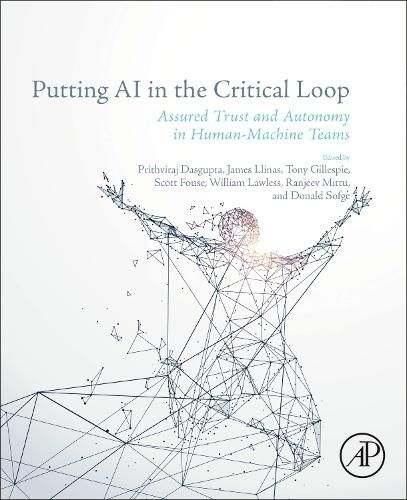Readings Newsletter
Become a Readings Member to make your shopping experience even easier.
Sign in or sign up for free!
You’re not far away from qualifying for FREE standard shipping within Australia
You’ve qualified for FREE standard shipping within Australia
The cart is loading…






Putting AI in the Critical Loop: Assured Trust and Autonomy in Human-Machine Teams takes on the primary challenges of bidirectional trust and performance of autonomous systems, providing readers with a review of the latest literature, the science of autonomy, and a clear path towards the autonomy of human-machine teams and systems. Throughout this book, the intersecting themes of collective intelligence, bidirectional trust, and continual assurance form the challenging and extraordinarily interesting themes which will help lay the groundwork for the audience to not only bridge knowledge gaps, but also to advance this science to develop better solutions. The distinctively different characteristics and features of humans and machines are likely why they have the potential to work well together, overcoming each other's weaknesses through cooperation, synergy, and interdependence which forms a "collective intelligence.? Trust is bidirectional and two-sided; humans need to trust AI technology, but future AI technology may also need to trust humans.
$9.00 standard shipping within Australia
FREE standard shipping within Australia for orders over $100.00
Express & International shipping calculated at checkout
Putting AI in the Critical Loop: Assured Trust and Autonomy in Human-Machine Teams takes on the primary challenges of bidirectional trust and performance of autonomous systems, providing readers with a review of the latest literature, the science of autonomy, and a clear path towards the autonomy of human-machine teams and systems. Throughout this book, the intersecting themes of collective intelligence, bidirectional trust, and continual assurance form the challenging and extraordinarily interesting themes which will help lay the groundwork for the audience to not only bridge knowledge gaps, but also to advance this science to develop better solutions. The distinctively different characteristics and features of humans and machines are likely why they have the potential to work well together, overcoming each other's weaknesses through cooperation, synergy, and interdependence which forms a "collective intelligence.? Trust is bidirectional and two-sided; humans need to trust AI technology, but future AI technology may also need to trust humans.